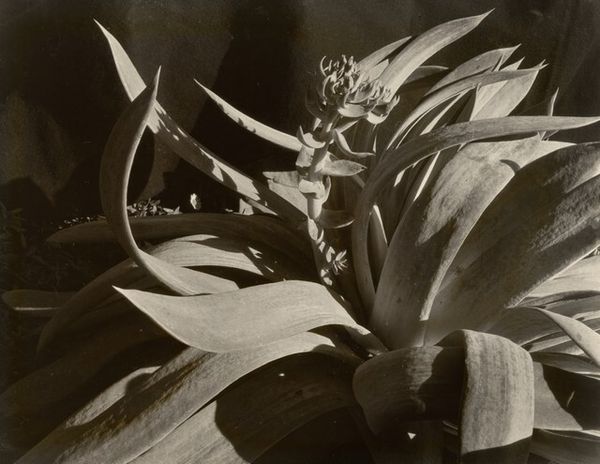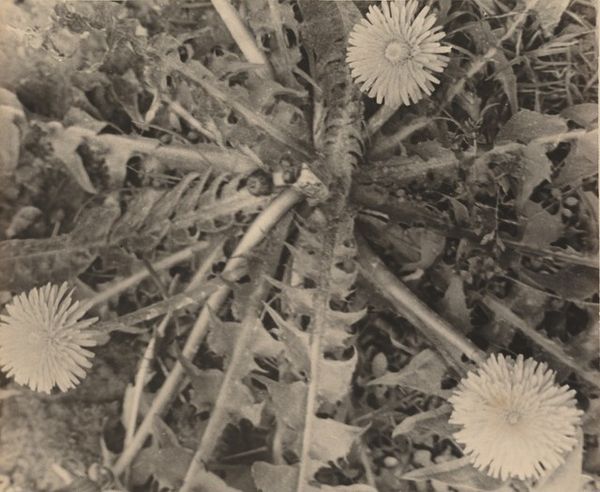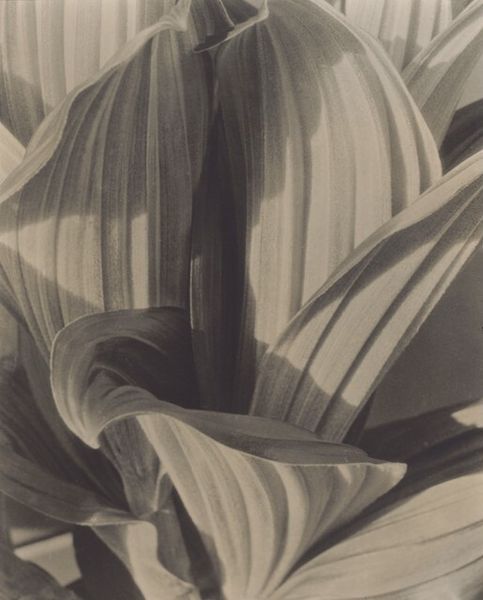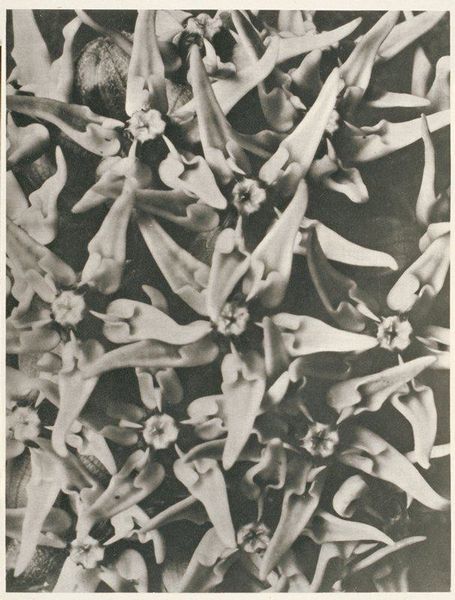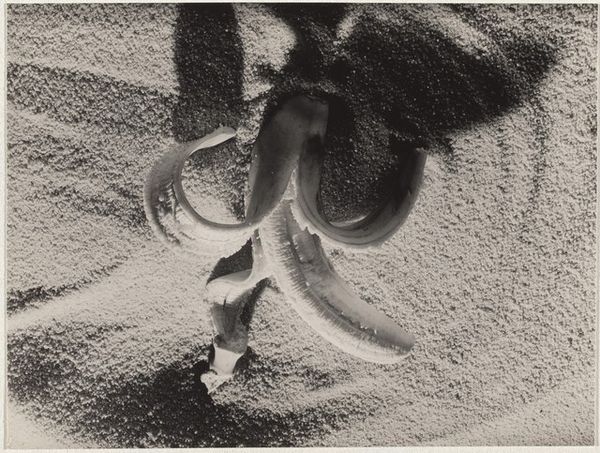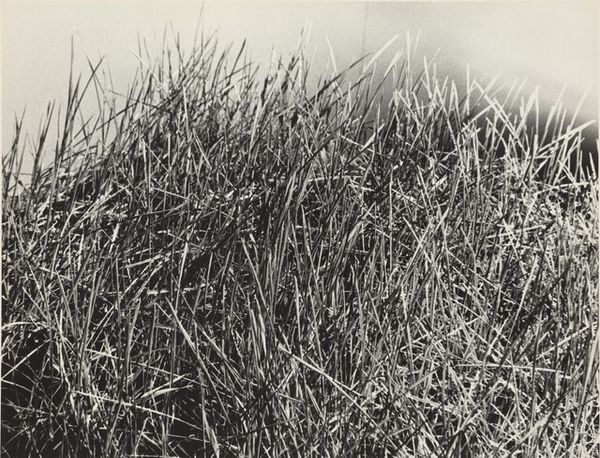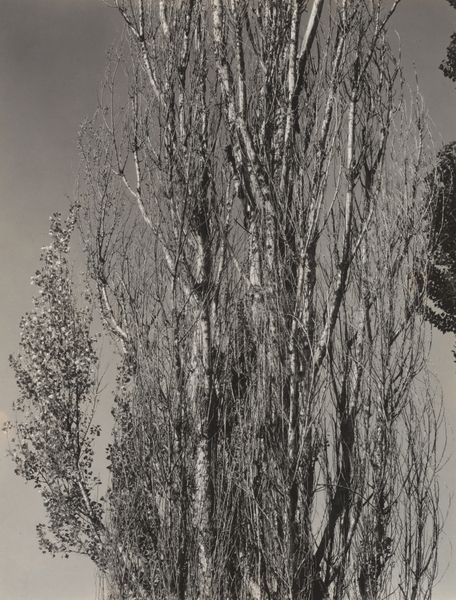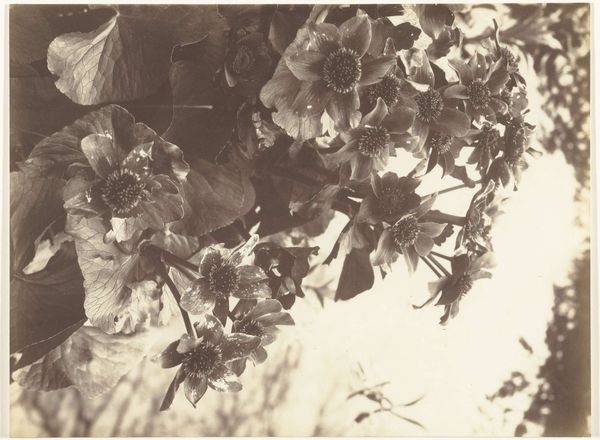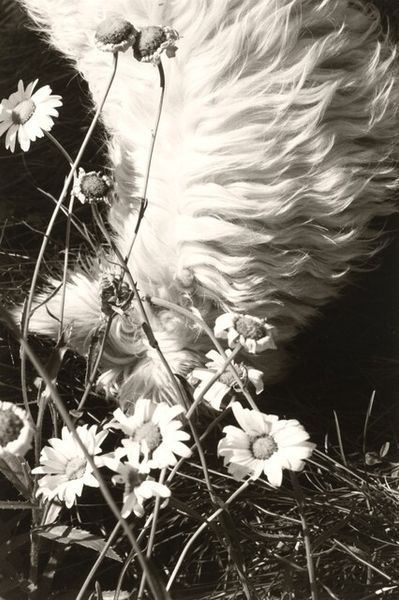![Wild Iris, Maine [recto] by Paul Strand](/_next/image?url=https%3A%2F%2Fd2w8kbdekdi1gv.cloudfront.net%2FeyJidWNrZXQiOiAiYXJ0ZXJhLWltYWdlcy1idWNrZXQiLCAia2V5IjogImFydHdvcmtzL2M0ODJlYzk1LWFhYzUtNGNkMi05MWIzLTUwMzRhZmE2NTY3OS9jNDgyZWM5NS1hYWM1LTRjZDItOTFiMy01MDM0YWZhNjU2NzlfZnVsbC5qcGciLCAiZWRpdHMiOiB7InJlc2l6ZSI6IHsid2lkdGgiOiAxOTIwLCAiaGVpZ2h0IjogMTkyMCwgImZpdCI6ICJpbnNpZGUifX19&w=1080&q=75)
photography
#
still-life-photography
#
organic
#
pictorialism
#
landscape
#
photography
#
line
#
modernism
Dimensions: sheet: 24.3 x 19.2 cm (9 9/16 x 7 9/16 in.)
Copyright: National Gallery of Art: CC0 1.0
Editor: This is "Wild Iris, Maine," a photograph taken by Paul Strand in 1927. The monochromatic tones lend this photograph a kind of quiet dignity. The towering blades of the iris leaves dominate the frame, obscuring a background filled with leafy ferns. How would you interpret this work? Curator: Oh, Strand. He saw poetry where others saw weeds, didn’t he? Look how he uses light – almost strokes of charcoal – to animate those still leaves. They’re reaching, aren’t they? Not just for sun, but for something more. The background blurs; it's secondary. Our eye dances to the verticals, that simple elegant repetition. The Modernist influence. And then the ferns, suggesting an ancient conversation. Is that what it felt like to be human, alive and a piece of the natural world, almost one hundred years ago? It's both timeless and distinctly of its moment. Does it stir anything in you, that longing for connection? Editor: It does, especially that thought about being connected to nature. It feels very different from the world now. The way the detail fades in the background… is that typical for the Pictorialist style? Curator: Exactly! It softens reality, pushes towards suggestion. The artist doesn’t want you to merely see; the artist wants you to *feel* the wildness, the quiet strength of life. The stark contrast anticipates the later clean precisionism in photography as well. He's walking both worlds at once, I imagine. Editor: That’s really helpful to think about. It’s like Strand is inviting us into the secret language of plants. Thanks for pointing that out! Curator: My pleasure! We've just barely scratched the soil on Strand here, though! Food for thought and fertile ground indeed.
Comments
No comments
Be the first to comment and join the conversation on the ultimate creative platform.
